Raised BedsWhy Grow in Raised Beds?I love my raised beds and usually add 1 to 2 more every year to my garden. There are several advantages to using raised beds to grow vegetables.
MaterialsWhat materials to build your raised beds with is a hotly debated topic. I prefer untreated wood, although I would be comfortable using treated wood today as copper is used as a preservative rather than arsenic. A study by Oregon State University (4) has found that only one inch of soil along the edge of the bed shows increases in copper levels, and that increase was small (20 ppm over untreated raised beds). We started with untreated lumber as it was cheaper than treated and even using untreated 2x10 boards our raised beds have lasted about 7 years. We built our first raised beds in 2017 and only this year (2024) have we started to replace some of the sides. We bought an Alaskan sawmill this spring and own a red pine plantation that needs thinning, so my husband has been milling 6x6s to build new raised beds and replace our older raised beds. The big advantage of 6x6s is that you can more comfortably sit on the edge of the bed to plant or weed. The gold standard for raised beds is cedar wood. I would love raised beds made out of cedar 6x6s but cedar wood is unfortunately extremely expensive. If you are only going to build one or two raised beds you could consider cedar depending on your budget. However, I have 19 raised beds and the cost of cedar is unrealistic. There are also other rot-resistant wood types, such as redwood, but they can be hard to source and expensive. Metal-raised beds, usually steel galvanized with zinc to prevent rusting, are becoming more popular. Although zinc can be toxic in large amounts it seems unlikely that enough would leach into a raised bed to cause toxicity issues. We also use galvanized food and water containers for our chickens and ducks and galvanized water tanks for livestock have been used for a long time. Therefore, I feel a galvanized metal raised bed is unlikely to cause health issues. Furthermore, I have heard good things about some of the metal raised bed kits (such as Epic Gardening Birdies Metal Raised Garden Beds[6]) you can buy regarding longevity and ease of construction, but I have no experience with them myself. If you decide to buy a galvanized livestock tank to use as a raised bed instead of a raised bed kit, just be sure to add drainage holes and ensure it is tall enough to accommodate the roots of your plants. Concrete (cinder) blocks are often used because they are easily available, relatively cheap, and heavy so no extra supports are needed. I would not use concrete blocks because, in addition to cement, sand, and gravel they also contain fly ash which is a byproduct of burning coal. However, this will likely only leach into the soil in large amounts if the integrity of the block is compromised. If you use concrete blocks, in good condition, this may be an acceptable choice for a raised bed. You can also choose to line your concrete blocks with a food-safe plastic liner, however, many people do not like growing food in plastic, even food-safe plastic. Materials I do not recommend are railroad ties, due to the creosote used as a preservative which is also a carcinogen. I also see old tires being used locally as raised beds, but this is not recommended since tires are made of petroleum-based products. Rubber degrades with exposure to UV light from the sun which will then leach petroleum chemicals into your soil. SizeA typical raised bed size is often 4x8 feet. The first raised beds we ever built were five feet wide. This was too wide to easily reach the center of the bed for planting and weeding. I suggest limiting your raised beds to no more than four feet across, but three feet is also acceptable, particularly if you are on the short side. The distance in length does not matter although I suspect eight feet is often used because wood is readily available in eight-foot sections, and it is easier to transport. There is no reason however that you cannot make longer raised beds, you would just need support along the way. Many people also get creative and make raised beds in different shapes to make meandering pathways between them. I am unfortunately not that creative and line mine up in two rows with each bed running north-south. My older raised beds were made using 2x10s so they were roughly 9.25 inches high or, if we added two layers, for example, to grow asparagus with deep roots, were 18.5 inches high. These were a great height but made it difficult to sit on the edge given the sides were only 1.5 inches wide. Our new raised beds made with 6x6s are currently only one layer high, so 6 inches (these are actually 6 inches high since we milled them ourselves, if you buy 6x6s in a lumber yard they will likely be 5.5” unless you can find rough sawn wood). We plan to slowly add more layers of 6x6s as we have the time to mill more logs. Ideally, a raised bed is 12-18 inches tall, but I found having the wider 6x6s raised beds easier to work with than the taller 2-inch-wide boards so am willing to sacrifice height temporarily until we mill more 6x6s. Even a 6-inch raised bed provides advantages to growing directly in the ground. As far as spacing is concerned, I like 3-4 feet between each raised bed. I found that 2 feet is too small to easily work in between raised beds. Buy or Build?Whether you buy or build your raised beds comes down to two different factors: budget and DIY ability. We chose to build our raised beds because I wanted quite a few of them which made buying them too expensive, and my husband and I are reasonably handy. We already had the tools needed (saws, drills, etc.) to build wooden raised beds. If you do not already have tools available weigh the cost of buying a raised bed kit with the cost of buying or renting tools plus lumber to build your own. Many hardware stores will also cut lumber to size for you so that could eliminate the need to buy a saw. When we built our raised beds with 2x10s we used screws to hold the boards together with a 2x4 at the corners. When we used 6x6s we pre-drilled holes through the 6x6s and then pounded a long spike through to hold them in place. In general, screws are preferable to nails because if you make a mistake, you can easily remove the screw. One thing we did not add to our raised beds is hardware cloth lining the bottom. This is used to prevent rodents from burrowing underneath and eating the roots. This has not been a problem for us but if you have high rodent pressure in your area I would recommend it. SoilWhen starting a raised bed from scratch I like to combine peat moss (make sure you buy the sustainable Canadian peat moss), topsoil or garden soil (about 50%), compost/composted manure, and sometimes a little sand. We usually get our topsoil/garden soil delivered as it is cheaper than bags if you need large amounts. Our compost is either our own (kitchen scraps mixed with used pine shavings from our chickens and ducks that have been composted sufficiently to reduce any pathogen load) or compost in bags we get from our local home improvement store. Sometimes peat moss is not recommended because it can cause your bed to dry out too much. I add no more than half a bag to my 4x8 foot raised beds and have not had a problem. After a raised bed is established, I usually add an inch or two of compost each year to maintain the fertility of the soil. I also grow many plants in pots and when I need to refresh the soil in my pots, I often dump the leftover potting soil into my raised beds (assuming no diseases were present). Potting soil usually has good drainage so this can also increase the health of your raised bed soil. The cost of filling a raised bed can be as expensive or more expensive than the cost of a raised bed itself, so be sure to add up the total cost before you build too many raised beds you cannot afford to fill. This is why we have slowly added 1 or 2 raised beds per year rather than making them all at once. ConclusionI love raised bed gardening and firmly believe the advantages outweigh the time and cost required to build or buy them. The vegetables in my raised beds routinely outperform my other vegetables in both output and health. If you wish to learn more about raised bed gardening, I encourage you to read or listen to Joe Gardener’s blog/podcast (links below) which is very comprehensive, and check out the other resources provided. References and Resources
0 Comments
Growing Great GarlicGarlic is one of my favorite plants to grow, mostly because it is very easy to maintain and I love to cook with garlic. Like many bulbs it is best planted in the fall, however you can also plant in the spring, the bulbs just may not grow as big. Growing garlic is easy and requires minimal upkeep. As long as you keep weeds down with mulch you can plant it and forget it. It is also insect-resistant, disease-resistant, and deer-resistant which is a huge plus. Home-grown garlic also tastes much better than store-bought which may be months old. Home-grown bulbs and cloves are often twice the size of those in the stores. Most garlic does keep well however, so there is nothing wrong with storing it in a cool dry place and using it months later. I've even heard of dicing it and freezing it although I have not tried it myself. As an added bonus, if you grow garlic that produces scapes you can harvest the scapes and use them in some great recipes. My favorites are garlic scape soup, scape pesto, and grilled scapes (see below for pictures). You can also use them as a substitute for regular garlic in any recipe. Fresh Cut Garlic ScapesCut scapes when they begin to straighten out. If you wait too long they will become woody. Grilled Garlic ScapesGrilled scapes were, surprisingly, my favorite way to prepare them. We drizzled them with olive oil, added salt and pepper and skewered them on a wooden skewer. Then grill them until they are tender. Delicious! Garlic Scape PestoThe garlic scape pesto is also very good. You make it very similarly to basil pesto. I used walnuts instead of pine nuts. The scapes are milder than the garlic bulbs so I did not find it too garlicky. I have used it on pasta and chicken both straight or half and half with regular basil pesto. Both are delicious! How to Plant GarlicUsually I try to plant my garlic in mid-October. This year I am a few weeks behind due to a couple of unexpected ER visits that eventually resulted in an urgent abdominal surgery. Now that my core muscles can take a little exercise I got my garlic planted ASAP. I hope it's not too late and the cloves can still get established before the ground freezes solid. Last year I planted my garlic in a raised bed with a high-quality soil, compost, and peat moss mix. It was the best garlic I have ever grown! Raised beds allow you to control the quality of your soil and also provide good drainage which was key this spring as we had 6-8" of rain above average over a 3-month period. Our onions that we planted in the ground simply rotted. Another important element is to buy good quality garlic and make sure it is compatible with your growing zone. Some garlic types (soft neck) do better in the south but will not overwinter well where I am in Zone 4. I have had the best luck with the hard neck varieties that overwinter well. You can buy garlic from many seed companies or even your local farmer's market. Step 1: Prepare the SoilThe first step is to prepare the soil for planting. Remove as many weeds as possible and loosen it up well. Step 2: Dig TrenchesDig trenches approximately 2-4 inches deep and about a foot apart. Step 3: Plant the GarlicBreak up your garlic bulbs into individual cloves and plant them root side down about 4-6" apart. Step 4: Add SoilCover the garlic cloves with 2-4" of loose soil. Step 5: MulchIf you live in the North you must cover them with a thick layer of mulch, usually 4-6". This will help the bulbs overwinter and can be removed or moved aside in the spring when the new plants start emerging. Most years I use leaves because they are readily available in the fall. This year I used the dead leaves and stems from our day lilies. I then usually continue to mulch, often with grass clippings, throughout the rest of the season. The garlic will start growing in the fall but then go dormant when the ground freezes. It generally will not emerge past the mulch layer. Last year we had an usually warm fall (I mowed the lawn in a T-shirt in November!) so our garlic grew more than normal. However, it still came back great in the spring. Once the new plants emerge in the spring you can move aside the mulch to help them and keep up on any weeding that needs done. If you keep them mulched weeding should be minimal. The next step is to keep an eye on the scapes. You have the option of allowing them to grow and leaving them on the plant. Some people promote removing the scapes when they start to uncurl so the plant puts more of its growth and energy into the bulbs. Cutting them may or may not make a difference but I prefer to cut them off just because I like to eat the scapes! You want to cut them when they are just starting to uncurl. If you wait too long the stems will start to get woody. After you cut the scapes the garlic usually grows for a few more weeks. I pick the garlic when the plants start to die off, usually around mid-July for our zone. I knock off excess dirt and let the entire plant dry in a cool, dry place, usually my garage. Once the entire plant is dried you can cut off the stem and knock off any more dirt. I separate out the biggest bulbs to save and re-plant and start eating the smaller bulbs. Different varieties store better than others but most will last for several months if stored in a dry place. Supposedly the soft-neck varieties store better than the hard-neck. Overall garlic is easy to grow and tastes great! I love roasting an entire bulb, spreading it on fresh-baked bread, and enjoying it with a nice glass of wine. Feel free to comment or message me with any questions! Fall GardeningFall gardening is a great way to extend the growing season and eat fresh vegetables into the fall and sometimes even the winter. Fall gardening also has several other advantages over the traditional spring/summer garden. One big advantage is that there are significantly fewer insect pests around to destroy your crops. Another advantage is you don't need to worry about summer coming on too quickly and your plants bolting too soon. For the northern garden, some of the best crops to plant for a fall garden include lettuce, broccoli, cabbage, spinach, mustard greens, kale, chard, peas, cauliflower, turnips, collards, carrots, and more. Basically, anything you would plant in the spring can be planted again in the fall. The following are a few tips for a successful fall garden. Tip #1: Time your Planting!Timing when to plant your fall garden is probably the most important factor. To determine the proper timing, you need two pieces of information. First, you need to know the average first frost date for your area. This is the date in the fall where on average (generally 50% of the time) the first hard or killing frost occurs. Remember, this is just an average so it is possible that the first frost may actually occur a week or two or even more in either direction. To determine your average first frost date, you can use a website such as the one by the National Climatic Data Center which gives the average frost dates for both spring and fall at various probabilities (I generally use the 50% one). There are plenty of other websites that give similar information but each one may vary slightly so you may want to check a few sites to get reliable date from multiple sources. The second piece of information you need is the average number of days to harvest for each vegetable you plant. This generally can be found on your packet of seeds. Different varieties of the same vegetable can vary greatly so you want to make sure you are using the dates from your specific variety not generic information for a general type of vegetable. In general, however, spinach, lettuce, and other greens grow quickly and will require fewer days to harvest and so can be planted in late summer or even early fall depending on your zone. Other vegetables that take longer to mature such as broccoli or cauliflower you will need to plant sooner, such as mid to late summer, again, depending on your zone. For example, if your vegetable takes 50 days to harvest and your average first frost date is October 1st then you would want to plant your seeds around August 12th which is 50 days before the average last frost date. Spinach and mustard greens grow quickly and can be planted later or multiple plantings staggered throughout late summer and early fall.Tip #2: Water your Seeds!Most years you will need to water more when planting a fall garden than for a summer garden. In general, we receive more rain in the spring and early summer so nature does a great job watering for us during those months. However, in our zone most of our planting for a fall garden needs to be done in mid-July to late-August. This is generally a drier time for much of the Northeast and Midwest so in order to receive optimal germination I usually water every 1-2 days until the seeds germinate and a good root system is established. Chinese cabbage and traditional cabbage grow much better in the fall when insects and slugs are less active.Tip #3: Cover your Plants!If your first frost comes earlier than expected there are ways to protect your plants so you do not lose your crops. The best way is to cover your plants to provide a few degrees of protection. The easiest way is to cover larger areas with a tarp or plastic of some kind, just do not let it touch the plants. You can also buy large frolls of cloth frost cover that is specifically designed to provide cold weather protection for plants. Frost covers come in a variety of thicknesses or you can double up for increased protection. Remember, however, that the thicker the cover the less light is allowed through. For individual plants, you can cover them with a milk jug with the top or bottom cut off or a pot or bucket. This can be time consuming depending on the size of your garden. Alternatively, you can plant your veggies in a greenhouse or cold frame. This requires more money upfront to build a greenhouse or cold frame. Most people are familiar with a greenhouse however a cheaper and easier version is to build a cold frame. This involves simply adding a clear “lid” to the top of a raised bed. This is generally glass or plastic. Many people recycle old windows and fit them to the top of a raised bed. The key with a cold frame is that they need to be lifted up to vent during the warm days and then closed at night to protect the plants from frost. Cold frames and greenhouses can significantly lengthen your growing season particularly in northern climates. Collards, peas, and broccoli are all great options for a fall garden. One of my favorite summer activities is gardening. My favorite types of gardening are vegetable and herb gardening. I grew up helping my parents with their garden and participated in 4H where I completed gardening activities and competed in the county fair. As a 12-year old I even had my own herb garden! One of the main reasons I enjoy gardening so much is because I love cooking and eating great-tasting food. Even if you live in an apartment there are ways you can still garden even if on a smaller scale. Container gardening or participating in a community garden are great options! In the following post, I will share some of my personal reasons for maintaining a vegetable garden and tips on how to get the most out of your garden. All the pictures that follow were taken from my garden this year. This is our first year gardening at our new house so we converted a field filled with grass and weeds into our garden. It is still a work in progress but even with a challenging rain-filled spring and early summer we have managed to produce a good number of fruits and vegetables. My Top 5 Reasons to Vegetable GardenReason 1: Taste and NutritionOne of the main reasons I love vegetable gardening is that fresh produce straight from the garden just tastes better. A sun-ripened tomato has so much more flavor and nutrition than one from the grocery store that was picked green and allowed to ripen on the truck, at the distributor, or at the store. Green tomatoes are often ripened via ethylene gas that is sprayed on them. Tomatoes naturally give off ethylene gas so there is likely nothing unsafe about this practice but it does have a huge effect on taste. Another reason I prefer fresh vegetables from the garden is that the time from plant to table is generally minutes to days whereas vegetables from the grocery store can be significantly older by time they make it to your plate. This dramatically affects the taste and nutrition of your food. Roma tomatoes ripening in the sunReason 2: Saves MoneyThe second reason I love vegetable gardening is that it is cost effective. If you are new to gardening you will have to spend some money up front for the proper tools and supplies. However, much of the equipment can be re-used and will last for many years. You also need to buy seeds and/or plants to transplant each year but if your garden is successful you will make that money back many times over. If you have the room to start your own seeds indoors to transplant you will also save a significant amount of money. Finally, if you are trying to eat healthy or even organic it can get very expensive very quickly. Eating local is a great idea but not everyone can afford to do all their shopping at the local organic farmers market or grocery store. Growing your own vegetables, even if you do not use completely organic methods, does allow you to eat healthier even on a budget. Reason 3: Mental and Physical Well-BeingThe third reason I love gardening is because I love spending time outdoors. It is great for mental health and as a form of strength-building exercise. As an introvert, I absolutely need time outside away from crowds and people. Even a half hour working in my vegetable garden relaxes me, reduces anxiety, and keeps me grounded. I am also prone to joint and tendon issues so I need to be really careful about how much and what type of exercise and activities I participate in. Gardening allows me to stay active and increase my upper (and lower) body strength although it is very easy to overdo it! Reason 4: Passing it on to the Next GenerationThe forth reason I love gardening is because it allows me to raise my daughter in a manner that increases her activity, nutrition, and love of the outdoors. Heading out to the garden reduces screen time and keeps her moving and exploring. She absolutely LOVES picking vegetables and usually eats the tomatoes, carrots, peas, and green beans straight off the plants. It is also slowly teaching her patience. I have to remind her over an over that we need to wait to pick many of the vegetables until they fully mature and ripen. In my opinion one of the biggest problems (among many!) in America is the disconnect between the food supply and our dinner table. Most Americans do not know where their food comes from or how it is grown and produced. I love teaching my daughter that our food does not come from a grocery store! This is an even bigger problem with our meat supply but I will save that for another post! Reason 5: Self-SufficiencyMy last reason to garden is to increase self-sufficiency. It is virtually impossible these days to be completely self-sufficient. Ideally my family would be completely self-sufficient in regards to food, energy, finances, etc. However, this is generally not realistic for us or most other families. The time when you could make a living and provide for your family on your family farm is gone. However, food is one area where it is much easier to become at least partially self-sufficient. Growing your own fruit and vegetables and then learning proper preservation techniques is one of the best ways to become self-sufficient. I will focus another blog post in the future on preserving your harvest. If I have managed to convince you to maintain a vegetable garden then read on for some tips on how to garden most effectively. These tips are mostly designed for people just starting out but even if you are an experienced gardener you may find them helpful. Tips for Vegetable GardeningTip 1: Location, Location, Location!The first thing you need to think about when starting a vegetable garden is where you want to place your garden. If you are in apartment with a balcony obviously you would want to start there or in containers at a window. Whether you are gardening indoors or out, one of the biggest requirements is light. A south facing garden is best as most vegetables need a significant amount of light. If you are indoors you can always supplement natural light with fluorescent bulbs or grow bulbs. If you have a garden outdoors, the closer to the house the better. You are more likely to maintain your garden if it is easily accessible. Another consideration for location is soil quality and drainage. If you have many places to choose from you may want to get your soil tested before deciding on a location for the garden however even if the soil is not the best you can slowly amend the soil over the years to optimize growth. You also do not want to pick a very low-lying area where water tends to sit as good drainage is important for the growth of most plants. If you live in a dry arid climate you probably want to maximize drainage into your garden to decrease watering requirements. Our garden in Wisconsin is not limited by space or light unlike our raised beds when we lived in NY. We are lucky enough to have plenty of space and light but do have drainage issues in parts of the garden. Vegetable Garden in the Middle of a FieldTip 2: Start Small!Once you have decided on location you need to pick a size for your garden. If you are new to gardening start small! It is very easy to get overwhelmed with a large garden and it is also more expensive in regards to time and money. You also need to buy less equipment with a smaller garden. You may be able to get away with just hand tools or a small hand-held rototiller. Larger gardens will likely require a walk-behind tiller or tractor with a roto-tiller. I am in the process of exploring no-till garden options but it can take many years to increase the quality of your soil to where this is a feasible option. As you can see from the above picture we did not take our own advice. We fenced in a half-acre, however probably 3/4 of the space is or will be dedicated to fruit and nut trees, grapes, and raspberries and other bush fruit. The last 1/4 is our vegetable garden which currently houses 2 raised beds but will hopefully have 4-6 in the future. Tip 3: Raised Beds!If you can afford it I would recommend at least one or two raised beds. You can fit more vegetables in a small space this way because the soil quality is usually better. If you make your own they may cost $100 or so each depending on the type of material you use, the soil you add, etc. This is an easy way to get a well-drained garden that isn’t too big and has high quality soil. I recommend adding in top soil, compost, and peat moss. If you are planning on many raised beds getting a dump truck load of soil and compost is much more economical than buying them in bags. 4’x8’ beds are optimal however I have tried 5’x10’ beds which worked but for a smaller person or child it is hard to reach to the center of a 5’ span. In addition to drainage and soil quality raised bed are great for any plant that you want to keep contained and prevent from spreading such as asparagus, horseradish, mint, etc. I currently have 3 raised beds, one for garlic, one for asparagus, and one for annual flowers. We hope to add one or two more each year. Ideally any smaller plants would go in raised beds although you can plant larger ones as well. In the future, I would love to grow onions, lettuce, spinach, peas, beans, broccoli, cauliflower, cabbage, peppers, and more in raised beds. The bigger plants like squash, pumpkins, and corn generally grow well and are easier to maintain directly in the ground. A great resource for raised bed gardening is Mel Bartholomew’s “Square Foot Gardening” book. Although he crowds his plants in a little closer than I do for many of mine it is still a great resource if you are just getting started. 4x8 Foot Raised Asparagus BedTip 4: Don't Plant in Rows!The traditional way of planting involved straight rows of plants. However, you make better use of your space if you plant using the square foot method where you utilize all available space. Just remember to leave rows or spaces where you to need access to pick. For example, vine plants like winter squash and pumpkins easily overtake any rows you may try to maintain. However, these plants require very little maintenance throughout the growing season so I like to leave 6 or 8 feet between plants but designate an entire quadrant of my garden to them without any rows. For vegetables like leaf lettuce or spinach and beets and carrots I simply disperse my seeds into a quadrant that is small enough for me to reach into to weed if necessary. By skipping the rows I fit more vegetables into a smaller space. Although this does often require more thinning depending on how thickly the seeds are dispersed. Turnips that are Dispersed, not Planted in RowsWinter Squash, Gourds, and Pumpkins without RowsTip 5: Mulch is your Friend!One of the best tips I have heard recently was to use cardboard boxes or newspaper to mulch your garden and prevent weeds. Spend the winter months collecting your newspaper and extra boxes or find free ones online. Remember to remove any plastic tape or metal staples from the boxes. The ink in newspapers is almost always soy-based so it is safe to use in gardens. Then when you plant your garden in the spring lay the boxes and newspapers out flat on the edges of your garden, in any rows, or between plantings to prevent weeds from growing. You’ll likely need to weigh your boxes and newspaper down with either mulch or rocks if mulch is in short supply. You can also use mulch directly without the boxes such as leaves from the fall, grass clippings, compost, etc. This will dramatically cut down on the amount of weeding you need to do and make gardening much more pleasant. Cardboard Boxes Dramatically Decrease WeedsTip 6: Hill your Crops!My last tip involves drainage. If you cannot afford raised beds or don’t want to use all raised beds, drainage can be a huge issue depending on your location. This year we planted some of our vine crops in hills and others we just planted straight into the ground. Unfortunately, this spring and early summer we received 6 to 8 inches of rain above average for a three-month period. The squash planted in hills grew much better than the squash that was planted flat into the ground. Most of our crops that weren’t hilled such as some squash, onions, and peas rotted in the ground because the water didn’t drain well. So, if your garden is in a low-lying area, you have a high clay soil that doesn’t drain well, or you are prone to a wet spring/summer you may want to hill or mound many of your plants. It’s much easier to water your garden when needed then try to remove too much water. I’m sure there are many other tips and that I could come up with but please feel free to send any comments or questions to me, either in the comments section below or via my contact page. Also, if there is any topic that you wish me to cover in more detail please let me know. Other topics I would like to discuss in the future include fencing, composting, growing vegetables vertically, seed saving, preserving, and lots more! |
Details
AuthorIn 2016, my family and I moved from the New York City area to small town Wisconsin. Our move, this website and blog (and our previous Etsy store) is the result of our desire over the past several years to simplify our lives, increase our quality of life, reconnect with nature, and enjoy a more self-sufficient life. I grew up as a country kid in central Pennsylvania working on my grandfather's fruit farm and as a corn "de-tassler" at a local seed farm. My background is in biology where my love of nature originated. I am a former research scientist and professor and have now transitioned to a part-time stay-at-home mom, self-employed tutor, and small business owner. Thank you for taking the time to check out my site. Archives
July 2024
Categories
All
|




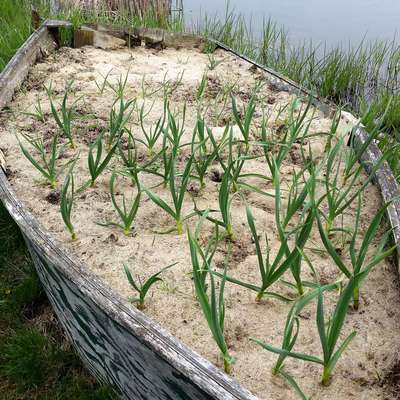
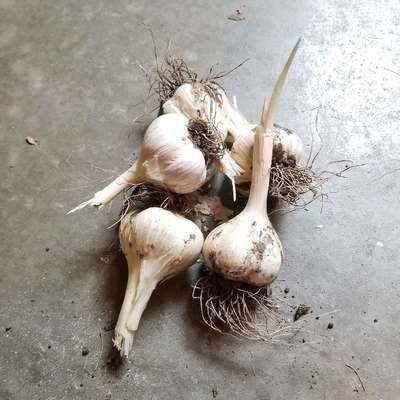

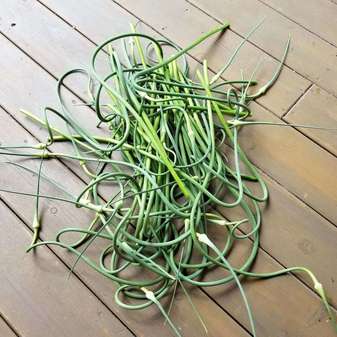


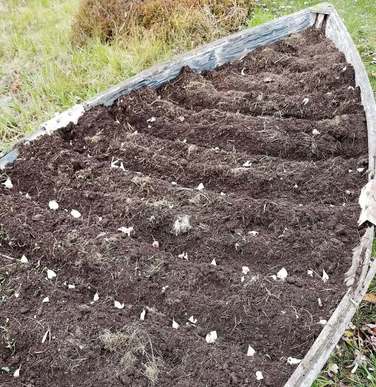
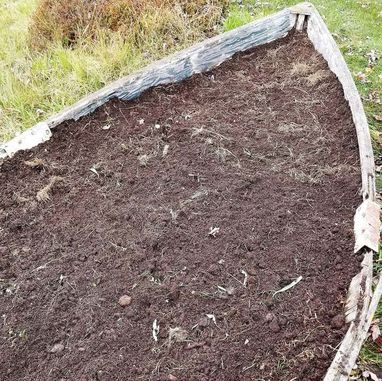

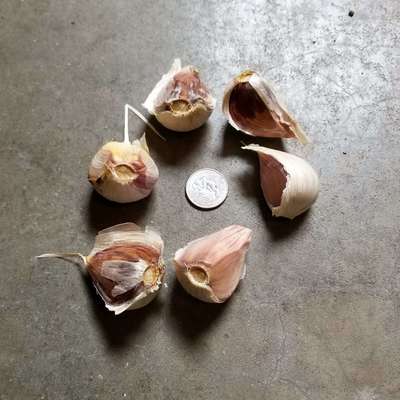

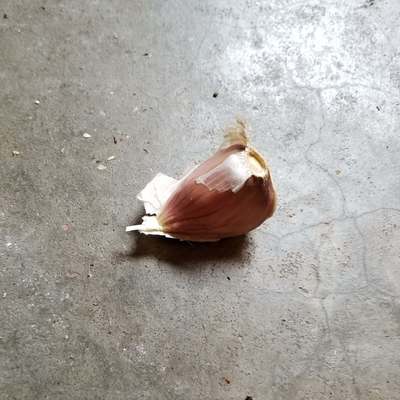

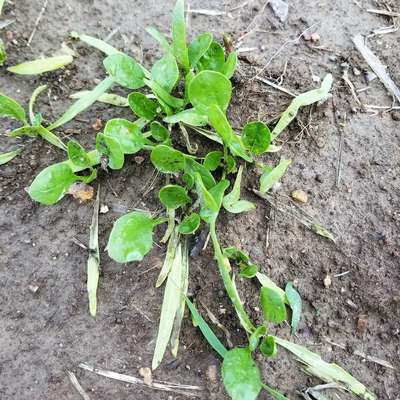


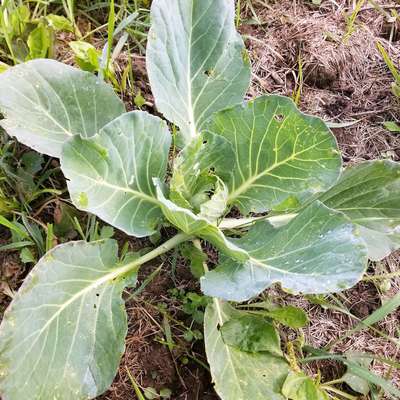
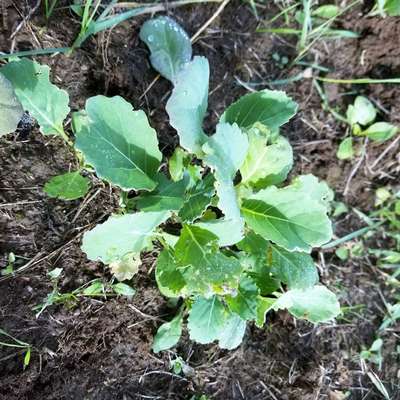



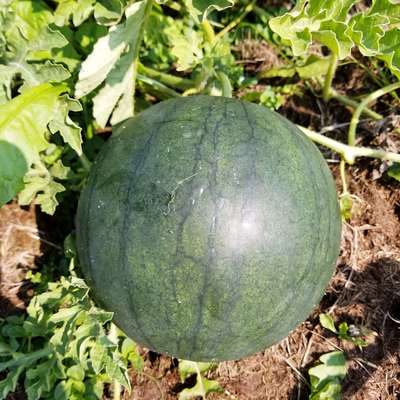


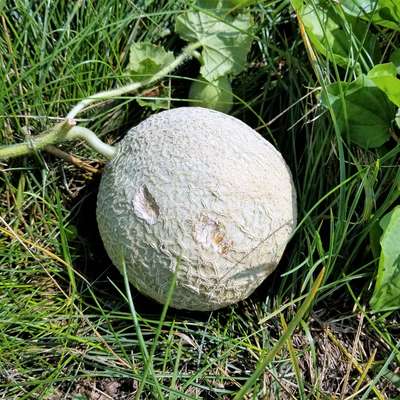
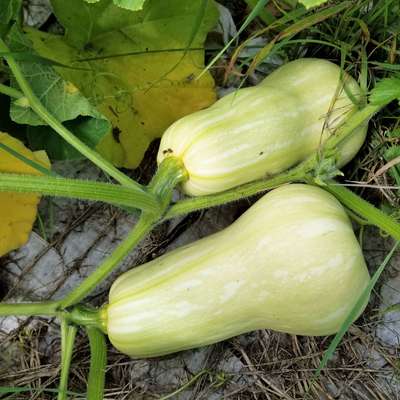



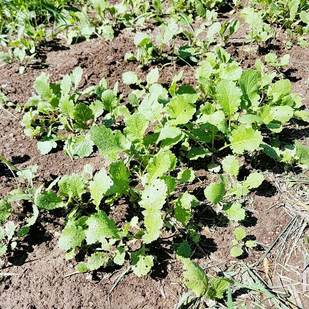
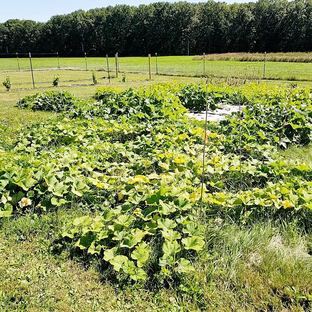

 RSS Feed
RSS Feed